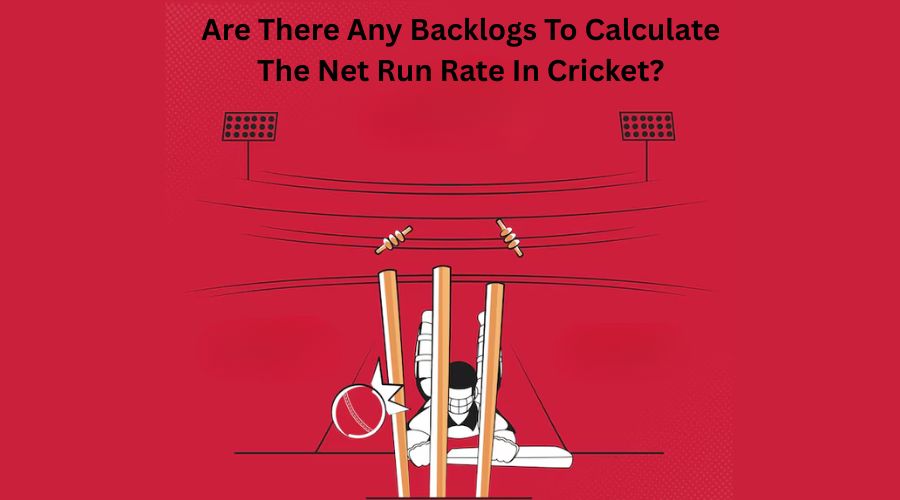Do you know how to calculate net run in cricket? Before that, let’s understand what we mean by NRR.
A statistical technique for evaluating teamwork and/or performance in cricket is net run rate (NRR). Like goal difference in sports, it is the most popular way to rank teams with identical points in limited-overs league competitions. The average runs per over scored by the team in a single game, less the average runs per over scored by the opposition, is the NRR. The average runs per over a team scores throughout a tournament, less the average runs per over scored against them during the same period, is the tournament’s Net Run Rate.
A positive NRR indicates that a team is outscoring its opponents on average, whereas a negative NRR indicates that a team is being outscored by its opponents on average. For this reason, the NRR should be as high as feasible. The 1992 competition was the first time NRR was used in the Cricket World Cup. Run rate was the tie-breaker in previous tournaments.
Let’s learn how to calculate net run rate in cricket with an example:
The average amount of runs scored per over by the entire team during the complete innings (or the entire innings thus far) is known as the team’s run rate (RR) or runs per over (RPO), i.e., run rate = total runs scored/total overs faced.
Therefore, a team’s RR is 481/50=9.62 if they score 481 runs off 50 overs. Although a ball is typically stated as .1 of an over in cricket notation, keep in mind that each over is composed of six balls, meaning that each ball is 1/6 of an over. Thus, their RR would be if they achieved the same score after 48.1 overs. .
To calculate net run rate, the team’s run rate is subtracted from the opponents’ run rate, i.e.,
The winning team will have a positive Match NRR for a recent match between two teams, whereas the losing team will have the opposite (i.e., the Match NRRs will be additive inverses, totaling to zero). The tournament NRR is the same as the match NRR because a single match’s NRR is rarely used, sometimes only after a team has participated in one tournament match.
To compare clubs in a league table, runs and overs are often added up throughout a season. Instead of being the total or average of the NRRs from each match, a team’s overall tournament NRR is determined by:
But there are some exceptions to calculate the net run rate for cricket:
- When a side is bowled out, the computations use the entire amount of overs to which the team was entitled, rather than the number of overs bowled (e.g., 50 overs for a One Day International and 20 overs for a Twenty20 match).
- Duckworth-Lewis revised targets are set if a match is interrupted. If a result is later achieved, Team 1’s innings is played using the revised targets and revised overs (i.e., one run less than Team 2’s final target score off the total number of overs allotted to Team 2), and Team 2’s innings is played using the actual runs scored and overs used by Team 2 (as usual).
- None of the runs scored or overs bowled in a match that is abandoned or ends without a result are taken into account in this computation.
- The number of overs allotted to each side for this computation is the number of overs that side 2 faced if a match is called off, but the outcome is determined by using Duckworth-Lewis retroactively. Team 2’s par score, or the number of runs they would need to have scored from these overs and wickets lost to match Team 1’s score, is given to Team 1, and Team 2 uses the actual runs scored for their innings.
Backlogs To calculate the net run rate in cricket?

1. Since Net Run Rate does not account for wickets lost, it does not accurately represent margins of victory.
According to Duckworth-Lewis-Stern, teams can score runs using two resources: overs and wickets. However, NRR does not account for wickets lost; it only considers one of these—overs faced. As a result, an NRR that is narrowly won can be higher than one that is easily won.
For example, in the 2013 Champions Trophy Group A:
- After scoring 139–9 from 36.3 overs and bowling Sri Lanka out for 138, New Zealand won the match by a slim margin (NRR = (139/36.5) − (138/50) = 1.05.
- With a match NRR = (297/47.167) − (293/50) = 0.44, Sri Lanka easily defeated England by holding them to 293–7 from 50 overs and then reaching 297–3 from 47.1 overs.
When the necessary run rate alone appears low, this fact may incite a team to play with excessive aggression in an attempt to maximize NRR by batting with little care for keeping wickets, which could put the team in danger of losing.
2. NRR might be manipulated
To obtain an extra edge by not giving their opponent a significant advantage, a team may decide to artificially lower their margin of victory, as determined by NRR. For instance, Australia needed to defeat the West Indies in the 1999 World Cup Group B final round to advance to the Super Six stage, but they preferred to take the West Indies with them to the Super Six instead of New Zealand. This is because, although they had lost to New Zealand in the group stage, Australia would have gained extra points in the Super Six stage by defeating the West Indies. Therefore, to minimize the match’s detrimental effect on West Indies’ NRR and, consequently, increase their chances of winning, Australia had an advantage in lowering their scoring rate and their margin of victory, as determined by NRR.
But with alternatives to Net Run Rate, this is also probably a possibility.
This is comparable to how a close win for one team in a football match might allow both teams to advance to the next round, as in the 1982 World Cup between West Germany and Austria.
Want to calculate the net run rate of your favorite IPL 2025 team? Worry not! Use the tricks and be the ‘Super Fan’.
Learn more about net run rate in cricket.
FAQs
Q1. How can we get a 1 net run rate in IPL?
Ans: The net run rate is calculated by deducting the average runs per over scored against a team from the average runs per over scored by a team in a tournament.
Q2. How does DLS affect NRR?
Ans: If a match is shortened and a result is achieved via DLS, the revised target is used for NRR calculations.
Q3. How are runs calculated in cricket?
Ans: Runs are accumulated by the batting team in various ways, most commonly by hitting the ball and running between the wickets (the three wooden stumps with two bails balanced on top). Each complete run earns the batting team one point.
Q4. How to increase NRR in cricket?
Far far away, behind the word mountains, far from the countries Vokalia and Consonantia, there live the blind texts. Separated they live in Bookmarksgrove right at the coast of the Semantics, a large language ocean.
Q5. What is the NRR rule?
Ans: It is often misunderstood but really quite simple to understand. A team’s net run rate is calculated by deducting from the average runs per over scored by that team throughout the competition the average runs per over scored against that team throughout the competition.

